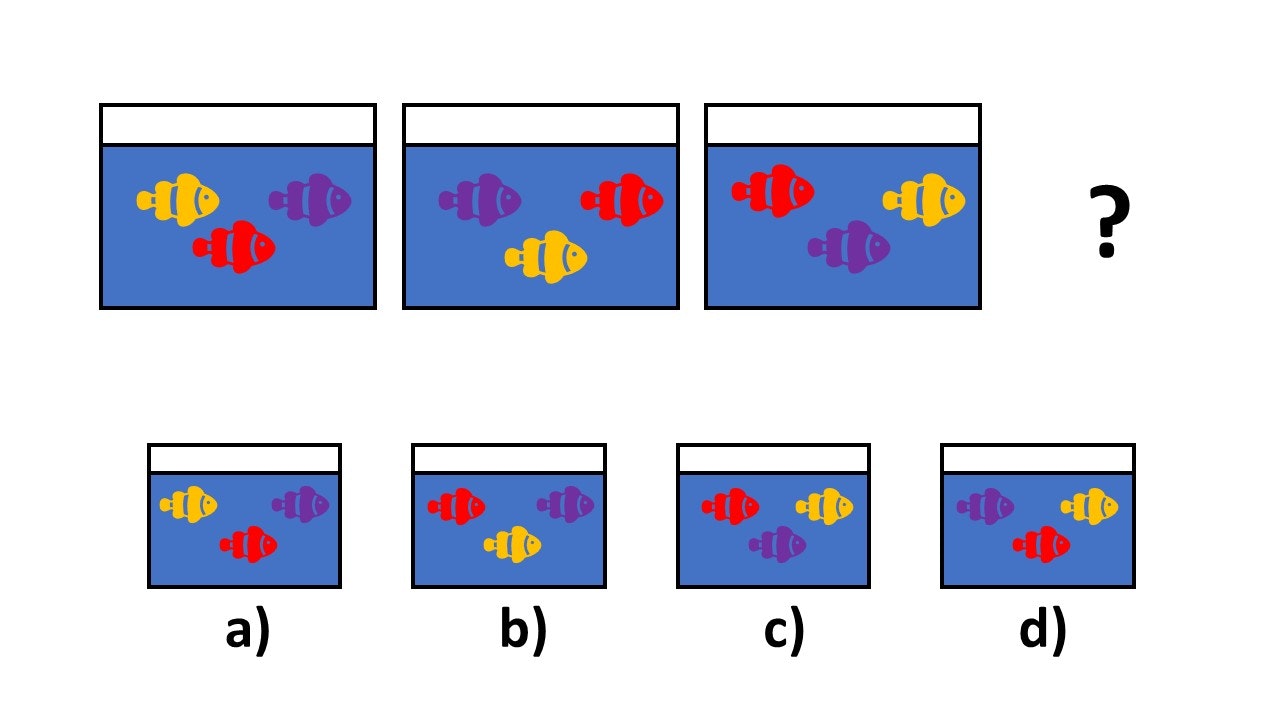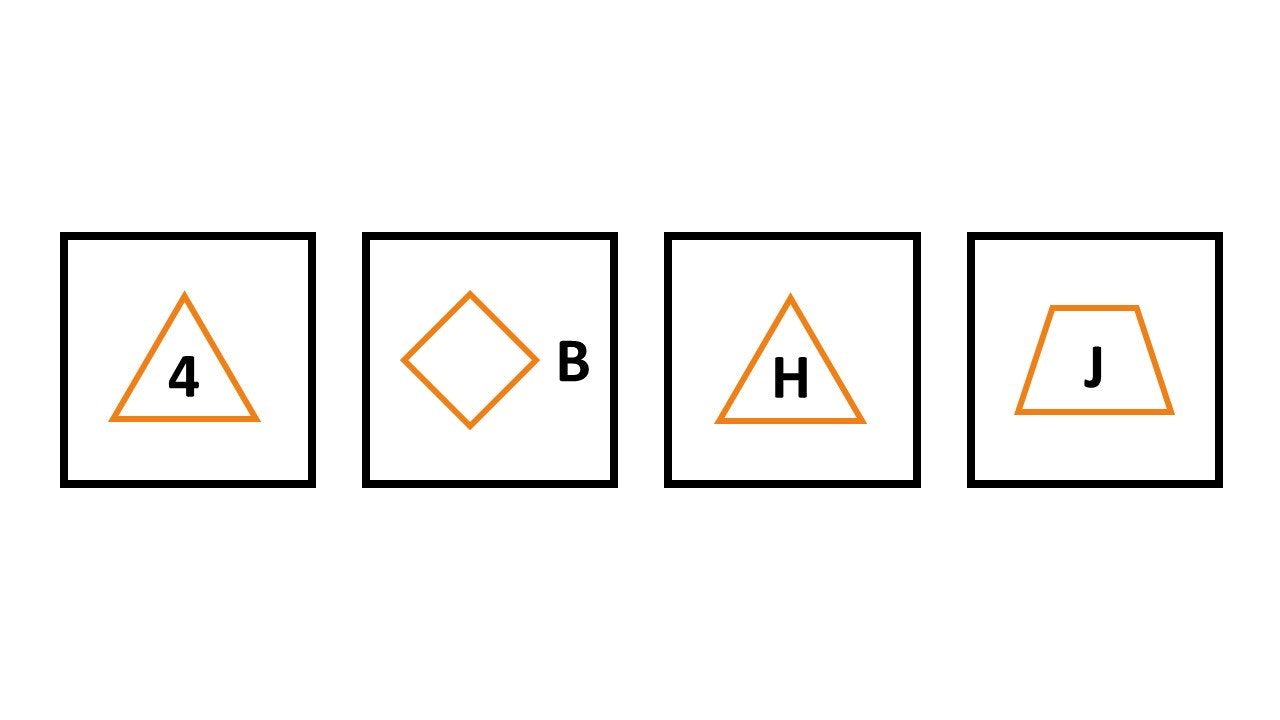Otis-Lennon School Ability Test : OLSAT Test 2025
Updated November 5, 2024
- What Is the OLSAT Test?
- A List of OLSAT Tests Available for Practice in 2025
- What Are The Levels of The OLSAT Test?
empty
empty
empty
empty
empty
empty
empty
- What to Expect on the OLSAT Test
empty
empty
empty
empty
- How Is the OLSAT Scored?
- OLSAT Practice Questions (2025's Examples)
empty
empty
empty
empty
- How to Prepare for the OLSAT Test in 2025
- Frequently Asked Questions
- Final Thoughts
What Is the OLSAT Test?
The Otis-Lennon School Ability Test (OLSAT) is issued by Pearson, a respected publisher of educational materials.
The OLSAT test assesses a pupil’s natural aptitude and intelligence, particularly their reasoning ability, logical thinking and abstract thinking.
Educational institutions and schools often use the OLSAT to identify more able children than their peers and those who may be deemed gifted.
This knowledge can help educators provide the proper support and input to nurture and guide gifted children to reach their potential.
Suppose a child shows signs of being extremely intelligent. In that case, the OLSAT can be used as a screening tool to determine whether they should gain a place in a talented school program.
The OLSAT Test is made up of different test levels, depending upon the age of the child.
Children must take the right level test for their age, as results are generated by comparing the scores across a peer group.
The OLSAT are:
A List of OLSAT Tests Available for Practice in 2025
- OLSAT Level A – Pre-kindergarten and Kindergarten
- OLSAT Level B – 1st Grades
- OLSAT Level C – 2nd Grades
- OLSAT Level D – 3rd Grades
- OLSAT Level E – 4th and 5th Grades
- OLSAT Level F – 6th, 7th and 8th Grades
- OLSAT Level G – 9th, 10th, 11th and 12th Grades
What Are The Levels of The OLSAT Test?
The OLSAT Test Levels are:
OLSAT Level A: Kindergarten
OLSAT Level A is aimed at children in Pre-K or Kindergarten.
At this level, tests are administered one-on-one, so the instructions, examples and questions can be read aloud by the administrator – although each item can be read only once.
Results are compared to others within a three-month age bracket as development moves fast.
Pre-K students need to answer 40 questions, 16 verbal and 24 non-verbal, with a total time of 77 minutes.
Kindergarten students have 60 questions to answer, 30 verbal and 30 non-verbal, again with a time limit of 77 minutes.
The subjects in this OLSAT assessment are:
- Following Directions
- Aural Reasoning
- Arithmetic Reasoning
- Picture Classification
- Picture Analogies
- Picture Series
- Figural Classification
- Figural Analogies
- Pattern Matrix
- Figural Series
Practice OLSAT Kindergarten: Level A with TestPrepOnline
OLSAT Level B: First Grade:
Aimed at six-year-old children in Grade 1, at this level all the information is read out by the test administrator as reading levels vary through this age group.
There are 30 verbal and 30 non-verbal questions in this assessment for a total of 60, to be answered in 77 minutes.
Subjects are:
- Following Directions
- Aural Reasoning
- Arithmetic Reasoning
- Picture Classification
- Picture Analogies
- Figural Analogies
- Figural Classification
- Picture Matrix
- Figure Series
Practice OLSAT First Grade: Level B with TestPrepOnline
OLSAT Level C: 2nd Grades
As children in Grade 2 are usually around seven years old, they are often capable of reading well. This means that half of the information in the assessment is read aloud, while the other half is completed independently.
There are 60 questions in the test, 30 verbal and 30 non-verbal.
Subjects in this assessment are:
- Following Directions
- Aural Reasoning
- Arithmetic Reasoning
- Picture Classification
- Picture Analogies
- Figural Classification
- Figural Analogies
- Pattern Matrix
- Figural Series
Practice OLSAT Second Grade: Level C with TestPrepOnline
OLSAT Level D: Third Grade
At this stage, the eight-year-old students in Grade 3 can read the questions themselves, and this means that they complete the questions independently.
Students have 50 minutes to answer 64 questions, 32 verbal and 32 non-verbal.
The subjects of the assessment are:
- Antonyms
- Sentence Completion
- Sentence Arrangement
- Arithmetic Reasoning
- Logical Selection
- Word and Letter Matrix
- Verbal Analogies
- Verbal Classification
- Figural Classification
- Figural Analogies
- Pattern Matrix
- Figural Series
- Number Series
- Numeric Inference
- Number Matrix
Practice OLSAT Third Grade: Level D with TestPrepOnline
OLSAT Level E: Fourth & Fifth Grades
For students looking to apply for specialized middle schools, the OLSAT Level E is suitable for students in Grades 4-5 (aged 9-10).
A 60-minute time limit is set, and there are 72 questions split equally between verbal and non-verbal subjects.
Questions include:
- Antonyms
- Sentence Completion
- Sentence Arrangement
- Arithmetic Reasoning
- Logical Selection
- Word and Letter Matrix
- Verbal Analogies
- Verbal Classification
- Inference
- Figural Analogies
- Pattern Matrix
- Figural Series
- Number Series
- Numeric Inference
- Number Matrix
Practice OLSAT Fourth & Fifth Grades: Level E with TestPrepOnline
OLSAT Level F: Sixth, Seventh and Eighth Grades
This assessment takes 60 minutes, with 36 verbal and 36 non-verbal questions to be asked. This is aimed at students aged between 11-13, in Grade 6-8.
The content of this assessment includes:
- Antonyms
- Sentence Completion
- Sentence Arrangement
- Arithmetic Reasoning
- Logical Selection
- Word and Letter Matrix
- Verbal Analogies
- Verbal Classification
- Inference
- Figural Analogies
- Pattern Matrix
- Figural Series
- Number Series
- Numeric Inference
- Number Matrix
Practice OLSAT Sixth, Seventh and Eighth Grades: Level F with TestPrepOnline
If you want 12-month access to all the practice resources for this test, our partner TestPrep-Online.com offers a Family Membership.
Family Membership gives you access to all the TestPrep-Online resources for the next 12 months. You will also get two separate accounts, which can be very helpful if you have two children preparing for their tests.
Get a Family Membership with 12-month access
OLSAT Level G: Ninth to Twelfth Grades
This assessment is designed to challenge students aged 14-16 years old and is usually administered in 9th-12th Grades.
As with some of the other assessments, there are 72 questions in total, split between verbal and non-verbal topics, to be answered in an hour.
Question types include:
- Antonyms
- Sentence Completion
- Sentence Arrangement
- Arithmetic Reasoning
- Logical Selection
- Word and Letter Matrix
- Verbal Analogies
- Verbal Classification
- Inference
- Figural Analogies
- Pattern Matrix
- Figural Series
- Number Series
- Numeric Inference
- Number Matrix
Ninth to Twelfth Grades OLSAT: Level G with TestPrepOnline
The OLSAT Test is used throughout the United States, especially in cities including New York and California.
As the test is very challenging, only children performing at the highest level in all areas are nominated for assessment.
If a child excels in one area, they are not necessarily suitable candidates for the OLSAT.
If you think your child might benefit from taking the test, speak to their classroom teacher for advice.
Alternatively, your child can sit an online practice test to gauge their performance before entering them for the actual OLSAT test.
What to Expect on the OLSAT Test
The OLSAT Test consists of two parts: verbal and non-verbal.
Many organizations use verbal and non-verbal assessments to generate a final OLSAT score.
However, some use only one if they choose to focus on a specific area.
OLSAT Verbal
The verbal component of the OLSAT Test assesses verbal comprehension skills and verbal reasoning skills.
We can break these topics down further into:
Verbal comprehension
- Following directions – Levels A to C
- Antonyms – Levels D to G
- Sentence completion (see example question below) – Levels D to G
- Sentence arrangement – Levels D to G
Verbal Reasoning
- Aural reasoning – Levels A to C
- Arithmetic reasoning – Levels A to C
- Logical selection – Levels D to G
- Word/letter matrix – Levels D to G
- Verbal analogies – Levels D to G
- Verbal classification – Levels D to G
- Inference – Levels E to G
OLSAT Non-Verbal
The non-verbal aspect of the OLSAT test assesses pictorial reasoning, figural reasoning and quantitative reasoning.
These topics can be further broken down into:
OLSAT Pictorial Reasoning
- Picture classification – Levels A to C
- Picture analogies – Levels A to C
- Picture series (see example question below) – Level A
OLSAT Figural Reasoning
- Figural classification – Levels A to D
- Figural analogies – Levels A to G
- Pattern matrix – Levels A to G
- Figural series – Levels A to G
OLSAT Quantitative Reasoning
- Number Series – Levels D to G
- Numeric Inference – Levels D to G
- Number Matrix – Levels D to G
OLSAT tests for the younger age groups (levels A, B and C) are read aloud.
Questions consist of verbal reasoning assessments, picture format and following directions.
Children of this young age are only required to answer 40 questions, children in grades 1 to 3 answer 60 to 64 questions, and children of grade 4 and above answer the full test of 72 questions.
The time allowance for the tests starts at 77 minutes for the youngest children, reducing to 60 minutes for older children.
Each test can be broken down into verbal and non-verbal parts as follows:
- Level A (pre-kindergarten) – 16 verbal, 24 non-verbal
- Levels B (Kindergarten) to C – 30 verbal, 30 non-verbal
- Level D – 32 verbal, 32 non-verbal
- Levels E to G – 36 verbal, 36 non-verbal
The tests can be taken in pen and paper format or online digital format and are administered on a 1:1 basis for younger children.
In contrast, older children sit in a group setting with their peers.
How Is the OLSAT Scored?
The OLSAT Test is marked using a Total Age-Based Percentile Score which compares the number of questions the student answered correctly to those whose peers also answered correctly.
The results from all students are used to find an average and place each student relative to the others.
Your child’s result is presented in different ways.
First, it is given as a plain number score, reporting how many questions they answered correctly and breaking down into the scores for each segment of the test.
It will also be presented in percentage format and is delivered as an overall result for the test.
Their OLSAT score is also given in relation to the School Ability Index (SAI), which sets the average mean at 100 and the maximum score at 150.
Any child who scores 132 or more is in the top 2% of their peer group.
A score of 116 to 132 represents the next 14% of the age group, and 64% of children in a set age group will achieve a score of 84 to 116.
Incorrect answers are not penalized on the test, so children are often encouraged to guess if they do not know the answer.
OLSAT Practice Questions (2025's Examples)
Sentence Completion
This type of question is self-explanatory – the child must simply select the correct word to complete the sentence.
Select the word that completes the sentence:
As well as enjoying riding her bicycle, Eva also ______ roller skating.
a) dreads
b) hesitated
c) loves
d) dislikes
Picture Series
The picture series question presents a series of pictures to the child, who must then select which picture comes next from the possible answers.

Look at the pictures. As you move along the boxes, the picture changes slightly.
To continue the pattern, which picture belongs in the empty box?
Antonyms
An antonym question is designed to assess a child’s vocabulary knowledge, grasp of the English language and grammar rules.
The opposite of 'hostile' is:
a) Friendly
b) Aggressive
c) Patient
d) Accepting

OLSAT Kindergarten Example Question
Although the questions asked of the very young children cover the same areas of ability, they take a slightly different format, as they are asked aloud by a teacher.
Here are some examples:

(Spoken out loud by a teacher) "Which of these pictures shows a letter inside a triangle?"
Prepare for the OLSAT Test with Test Prep Online
How to Prepare for the OLSAT Test in 2025
The OLSAT Test is a challenging and high-level assessment, and adequate preparation is vital.
There are ways you can support your child to get ready for their OLSAT Exam test to relieve pressure and to help them perform at their best on the day.
Step 1. Sit Past Papers and Take Practice Exams
Online test papers and OLSAT practice questions are a vital part of the preparation for the Otis-Lennon School Ability Test.
Practice papers are available online in both paid and free versions.
Sitting a OLSAT practice test replicates actual test conditions, such as time constraints and typical question examples, to give the child a taste of how it feels to sit the actual test.
Practice tests also provide a score so you can identify any areas of weakness to study further before taking the real test.
For more relaxed and fun practice, individual example questions can be found online, often in the format of interactive games and activities.
Answering questions presented in different ways provides more opportunity for practice without any added pressure.
Step 2. Focus Equally on All the Sections
Children could be inclined to miss out questions they struggle answering.
Encourage your child to spend time on all sections, even those that they might find difficult.
Leaving out challenging questions or neglecting to give your child the time and attention they require can result in them losing marks and the final OLSAT score not reflecting their true ability.
Step 3. Guess if You Do Not Know the Answer
The official advice from Pearson is that children should not guess if they do not know the answer, as this skews the results.
However, as mentioned above, the OLSAT does not penalize for incorrect answers; therefore, you might choose to advise your child that it is always better to guess than to leave the answer blank.
Make sure your child understands the approach they will take on this before they head into their test.
Step 4. Learn the Formats of the Questions
It can be overwhelming for your child to open a test paper and try to understand questions they have never seen before.
If your child knows what to expect of the questions in the OLSAT, they will not be caught off guard.
Seeing a familiar format of question and answer can help the child feel more confident and prepared and avoid panic during the test.
Step 5. Teach Your Child to Use Process of Elimination
A good technique for answering multiple-choice questions is process of elimination.
Teaching your child this approach can help them work out the answers during the test, strategically and logically.
Once the student has eliminated all the answers they know to be incorrect, they can then guess from the remaining possible answers.
Step 6. Practice Against the Clock
Each test comes with a time allowance; therefore, if your child has practiced working within this time, they will find it easier to pace themselves in the actual test.
Very young children may not be aware of the time, and their teacher reading the questions will manage the time.
However, knowing how long to spend on each question and when to progress to the next section can be very helpful for older children.
Step 7. Encourage Younger Children to Practice Listening and Concentration
Younger children will have the test questions read aloud by a teacher.
It is important to note that the question will only be read once. The teacher cannot repeat it, even if the child did not hear it properly.
Ensure that your child knows this and has practiced sitting nicely and listening carefully.
Step 8. Make Sure Your Child Is Mentally and Physically Fit
The OLSAT is demanding for any child; therefore, ensuring the basics are covered can help give your child a head start on focusing and performing well on the day.
Adequate preparation will help keep them calm.
In the lead-up to the test, make sure your child gets plenty of rest and good quality sleep.
Ensure they are eating healthy and nutritious foods, and are well hydrated.
The OLSAT is designed to be a high-level test which makes it challenging, and the best way to pass is to really understand what you will be facing in the assessment.
Sitting past papers as practice tests is an excellent way to do this and will help you pinpoint if there are any areas for improvement before the real thing – so you can revise and practice.
The OLSAT is a test that is used in different ways, which means that there is no definitive good score to aim for.
The scoring for the OLSAT usually means that a gifted child will score about two standard deviations above the mean.
The OLSAT is known to be difficult because it is designed to identify highly gifted children in an extremely competitive environment.
One of the reasons it feels hard is that children will find the exam unfamiliar – which can be mitigated through practice.
The OLSAT test is not an IQ test. It measures thinking and reasoning skills and looks to the future performance of a child to decide if they should be included in a gifted and talented program.
The verbal section of the OLSAT tests for skills that are necessary in critical reading, including sentence completion, sentence arrangement, and antonyms. It is more about thinking and reasoning abilities.
Preparation for the OLSAT test is key to getting a good score, and you can prepare by taking practice tests.
The past papers are an excellent resource, but there are other practice assessments available online.
Use the tests to see if there are any areas where improvement is needed so that your child can refresh their knowledge and focus on every section.
If you want to improve your score on the OLSAT, the best thing you can do is make sure you know what the test is going to be like.
The easiest way to do this is by taking practice tests or past papers.
Focus on the test should be shared between all the sections for the best results – and if you are unsure, you can guess because there is no negative marking.
The OLSAT measures students on their thinking and reasoning skills with both verbal and non-verbal questions. It is designed to assess students for their potential success in a gifted and talented program.
The OLSAT is delivered differently depending on the age of the children being assessed. The youngest children will have the test read aloud to them, and they get up to 77 minutes to complete. Older students answer more questions, with a shorter time limit of 60 minutes.
The OLSAT test is divided into two sections, verbal and non-verbal. Most institutions will evaluate on both sections, although some will only focus on one.
The OLSAT is scored using a Total Age-Based Percentile Score. This is a comparative scoring system that places each individual student relative to the performance of others. It is positively marked, with no points taken away for an incorrect answer.
The OLSAT raw score is the total of correct answers that your child gave, out of the total number of correct answers possible (i.e., 56/60).
This is the basis of the School Ability Index (SAI), which sets the average score at 100 and the maximum at 150.
The standard deviation of the SAI is 16. Around 2% of students will score more than 132, and around 2% of students will score less than 68 on the SAI.
OLSAT scores are typically reported in percentiles.
The percentile score indicates the percentage of students who scored lower than the tested student.
For example, a percentile score of 75 means the student scored better than 75% of students who took the same test.
Different school districts or educational institutions may set their own criteria for identifying gifted and talented students based on OLSAT scores.
Typically, students scoring in the 90th percentile or above are considered for gifted programs.
OLSAT scores are typically provided directly to the educational institution that administered the test, such as the school or district. Parents or guardians can inquire about the OLSAT scores of their child by contacting the school or the relevant educational authority.
The test publisher, Pearson Education, offers official practice materials and study guides for the OLSAT. You can check their website or search for OLSAT practice materials on their online bookstore.
Major bookstores, both online and physical, often carry test prep books that include practice tests for various standardized tests, including the OLSAT. Look for titles like "OLSAT Practice Tests" or "OLSAT Prep."
Websites like Amazon, Barnes & Noble, and others typically offer a wide range of OLSAT practice books and study guides. You can find both physical copies and e-books.
Some schools and educational institutions also offer OLSAT preparation courses or resources to their students. Check with your child's school or the school district to see if they have any OLSAT practice materials available.
The OLSAT practice test is intended to mimic the format and content of the actual OLSAT, giving students an opportunity to become familiar with the types of questions they might encounter on the real test.
It helps students and their parents or educators understand the test structure, question types, and the skills being assessed.
Review the OLSAT practice test beforehand so you understand the test format, question types, and time limits. This will help you better manage the test session.
Choose a quiet room with minimal distractions for the testing session. Ensure that students have enough space to work comfortably.
Distribute the OLSAT practice test booklets or printed copies to each student, along with pencils or any other allowed testing materials.
Before starting the test, explain the test rules and procedures to the students. Make sure they understand the importance of following instructions and maintaining a fair testing environment.
Announce the start and end times for each section of the practice test. Use a timer to keep track of the time and give warnings as the time is about to expire.
Walk around the room during the test to ensure students are focused and following the rules. Keep an eye out for any suspicious behavior or violations of test integrity.
If students have questions about the test instructions or content, answer them without giving away answers or hints that could give an advantage.
When the test session is complete, collect the completed OLSAT practice test booklets or papers from the students.
If the practice test is being used as a diagnostic tool, review the results to identify areas of strength and weakness for each student.
Offer feedback to students, parents, or educators based on the practice test results, and provide guidance on how to improve performance if necessary.
Final Thoughts
The OLSAT is used across the United States to identify children suitable for gifted programs.
The test comprises various psychometric assessments and intelligence tests designed to challenge even the brightest of children.
Parents who suspect their child might be eligible for gifted and talented support can discuss the OLSAT test with their child’s classroom teacher.
Children can prepare for the test in several ways:
- Taking online practice tests
- Ensuring good nutrition and hydration
- Getting enough sleep before the day of the test
- Learning about the process of elimination to help answer multiple-choice questions.
The OLSAT can be taken at any age; therefore, parents are advised to wait until they feel their child is ready and prepared, even if that means waiting for a few years.





